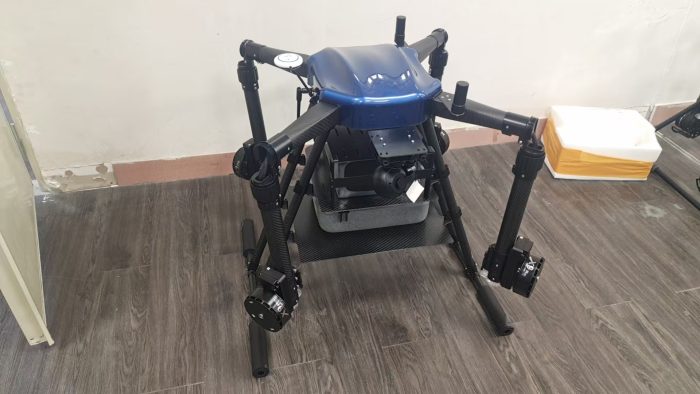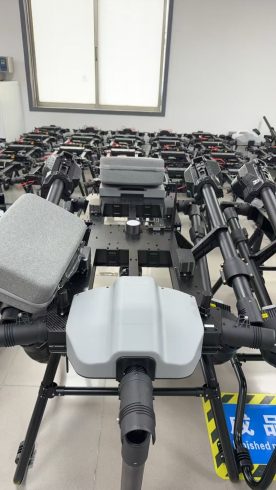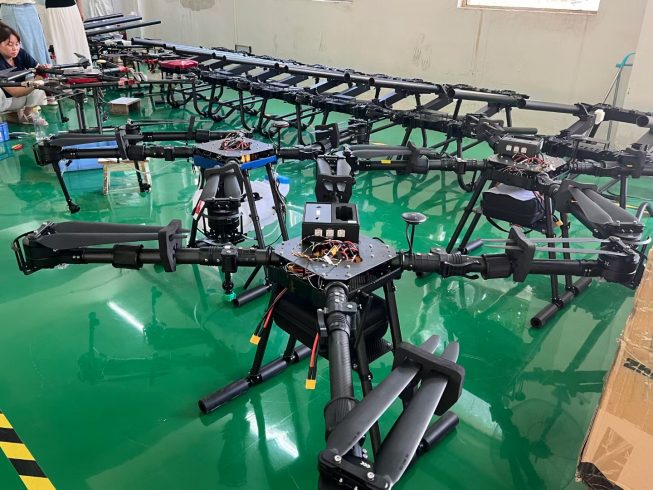In a world where agriculture must feed 10 billion people by 2050 without exhausting the planet, every tool counts. Enter agricultural drones—once futuristic gadgets, now vital allies in the fight for sustainable farming. But behind these flying marvels lies a factory that sees drones not just as hardware, but as bridges between tradition and progress, profit and purpose. Here’s how we’re growing a future where technology serves both farmers and the earth.
The Crisis: Farming on a Tightrope
Modern agriculture faces a triple threat:
-
Resource Scarcity: Freshwater use for farming has tripled since 1970; arable land per person has shrunk by 30%.
-
Climate Vulnerability: Extreme weather—droughts, floods, heatwaves—now disrupts 40% of global harvests annually.
-
Equity Gaps: Smallholder farmers, who feed 35% of the world, lack access to tools that could lift them out of poverty.
Drones alone won’t fix this. But purpose-built drones? They might just tip the scales.
Our Blueprint: Empathy First, Technology Second
Our factory wasn’t founded on a love of gadgets—it was born from listening. We spent years visiting farms: talking to a Maasai pastoralist in Kenya tracking drought-stressed cattle, a Nepali rice farmer battling monsoon-induced pests, and an Oregon orchardist struggling to prune 500 acres alone. Their stories became our design manual.
1. Sustainability Woven into Every Component
Farmers don’t want “eco-friendly” drones—they want tools that reduce harm while working. Our drones feature:
-
Solar-Augmented Batteries: Extend flight time by 50% using renewable energy, cutting diesel reliance for charging stations.
-
Biodegradable Sensor Casings: Made from plant-based polymers, they decompose in soil within 18 months—no toxic e-waste.
-
Precision Spraying: AI-guided nozzles reduce pesticide use by 65% compared to manual methods, keeping waterways clean.
2. Tools That Adapt to Their Farm, Not Ours
A dairy farmer in New Zealand needs different tech than a cotton grower in India. Our drones are modular:
-
Swap Payloads: Attach a multispectral camera for crop health scans, a seed dispenser for reforestation, or a thermal sensor for livestock monitoring.
-
Localize Software: Apps display data in regional languages (Swahili, Bengali, Quechua) and integrate with local weather APIs.
-
Low-Bandwidth Mode: For farms with spotty internet, drones store field data offline and sync when connectivity returns.
3. Affordability Without Exploitation
We rejected the “premium tech” model. Our base drone costs $4,500—half the industry average—thanks to:
-
Local Sourcing: 70% of parts come from regional manufacturers, boosting rural economies.
-
Lease-to-Own Plans: Smallholders pay $150/month, making tech accessible without debt.
Stories from the Soil: Drones as Lifelines
Let’s meet the farmers who turn our blueprints into livelihoods:
Fatima, Cotton Farmer, Mali
For years, Fatima lost 40% of her crop to bollworms—hidden until it was too late. With our drone, she now scouts fields weekly. The AI flags infested areas in red; she sprays only those zones. “I save $800 a season on pesticides,” she says. “And my kids? They’re in school, not helping me spray.”
Lars, Organic Dairy Farmer, Denmark
Lars needed to monitor 200 acres of pasture for overgrazing without using synthetic fertilizers. Our drone’s thermal sensor detects stressed grass, while its multispectral camera maps soil nutrients. “I can rotate cows before the grass dies,” he grins. “My milk yields are up, and the cows are healthier.”
Aisha, Women’s Cooperative Leader, Tanzania
Aisha’s group of 30 smallholder farmers couldn’t afford drones—until we launched a co-op program. They pooled savings to buy one, then trained each member to operate it. Now, they scout fields together, share data, and negotiate better prices with buyers. “We’re not just farmers anymore,” Aisha says. “We’re tech leaders.”
The Ripple Effect: Growing a Healthier System
Our drones don’t just help individual farmers—they transform entire ecosystems:
-
Water Security: In California’s drought-stricken Central Valley, precision spraying has cut agricultural water use by 30% in pilot regions.
-
Biodiversity: In Brazil’s Atlantic Forest, farmers using our drones to monitor native plant buffers have reduced deforestation by 25%.
-
Gender Equity: In Bangladesh, women farmers—who often manage 60% of household farming—are now using drones to assert control over crop decisions, boosting their income by 40%.
What’s Next: Flying Toward Regeneration
We’re not done. This year, we’re rolling out:
-
Regenerative Drones: Equipped with soil health sensors to measure carbon sequestration, turning farms into climate solutions.
-
Youth Training Programs: Partnering with NGOs to teach drone operation in rural schools—ensuring the next generation grows up fluent in “ag-tech empathy.”
-
Open-Source Blueprints: Sharing our modular designs with local manufacturers, so communities can build and repair drones themselves.
Farming is about stewardship. So is our factory. Every drone that takes flight carries more than sensors—it carries the belief that technology, when rooted in empathy, can heal the land and lift the people who work it.
Because the best harvest isn’t just crops. It’s a future where farmers thrive, the planet flourishes, and innovation tastes like hope.
THE END










暂无评论内容